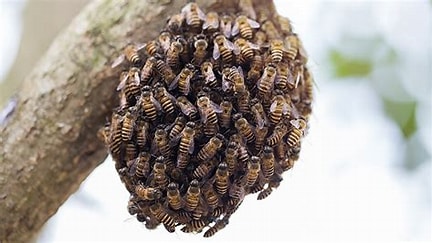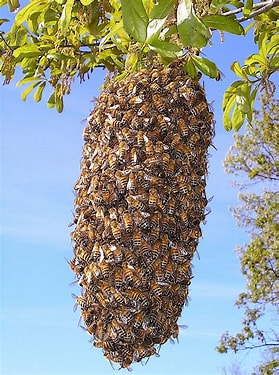Be Wildlife Friendly!
Below are some things you can do to help and encourage wildlife around the village and to your garden:
HONEY BEES
April and May are honey bee swarming season. If if you find a honey bee swarm (see pictures for identification) please don't panic or harm them. Please give Lee a call on 07766073720 and he will safely remove them for you.
Swarming season means it is time for honeybees to reproduce. Swarming takes place for more than two to three weeks at a time. Sometimes there are after-swarms which are secondary swarms that occur accompanied by a virgin queen.
So, what time of the year do bees swarm?
Swarm season is usually expected during late Spring, this is between April and May. This is the time of the year when bees reproduce and discover new places to build their hives. You will notice it a swarm when you see thousands of bees hovering on trees and houses looking for a new place to start fresh.
While homeowners may find this a stressful predicament, smart beekeepers will want to know what time of the year bees swarm so they can potentially collect the swarm and start a new hive.
For many, seeing bees swarm can be an alarming sight. To truly understand why bees swarm in such a daunting fashion, it is important to first understand how honeybees reproduce.
Every hive has one queen bee. The queen bee sends out a pheromone so that the other bees do not make any more queen cells. During the springtime, the hive grows enough to confuse some of the drones who do not get exposed to the pheromone to make new queen cells.
A beehive with multiple queens results in swarming. That means the queen will take most of the worker bees with her to find a new home.
But why do bees swarm particularly in the spring? Beekeepers believe it has to do with the warm weather in March (when the bees strengthen in numbers) which is followed by a slightly cooler spell in April and then warm weather again which is the bees cue to swarm.
AMPHIBIANS - FROGS, NEWTS AND TOADS
If you want to attract amphibians to your garden a pond is an ideal way to do this. Please visit this page on the RHS web site on how to build a pond and this page on the RHS website to find out how to attract amphibians to your garden.
BIRD BOXES
Something to get the kids involved in is building bird boxes for the visiting garden birds. By visiting the RSPB website you can find out how to do this.




HEDGEHOG HIGHWAY
If you want to club together with neighbours and build a hedgehog highway, please visit the Hedgehog Street website where it gives instructions on how to build one.
PLANTING TO ENCOURAGE WILDLIFE
Want to encourage wildlife to your garden. Please visit the RHS website for more information on planting appropriate plants to encourage bees, birds and other animals to your garden.
Other useful links to information encouraging wildlife to your garden can be found below:
Gardeners World - Wildlife Friendly Plants